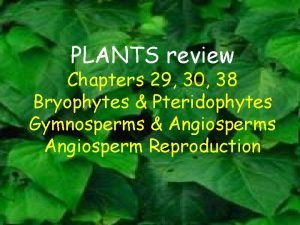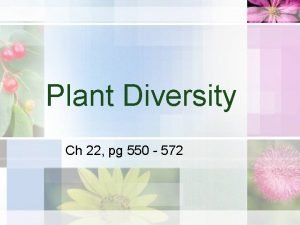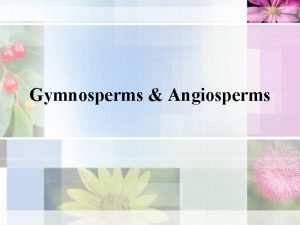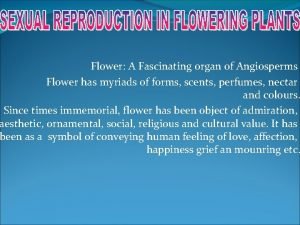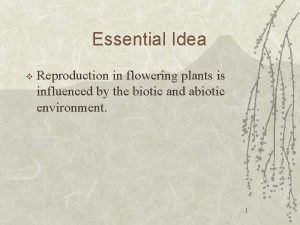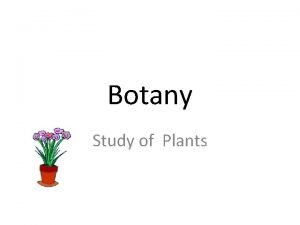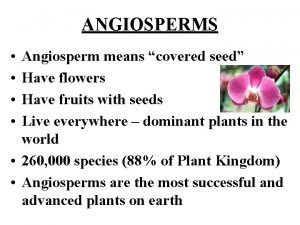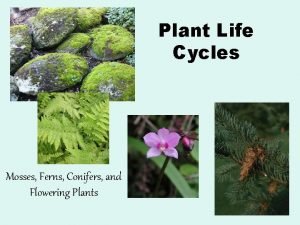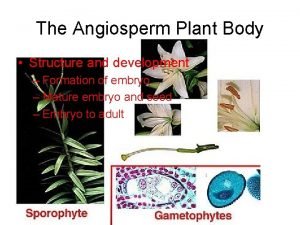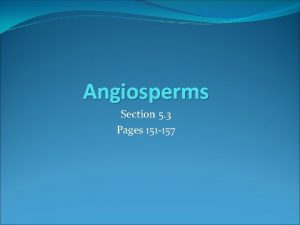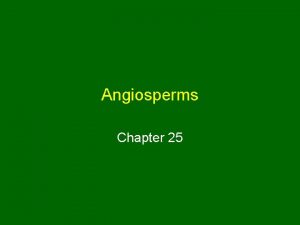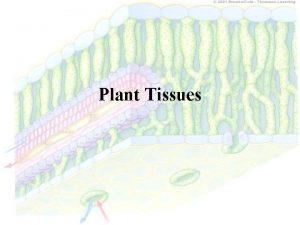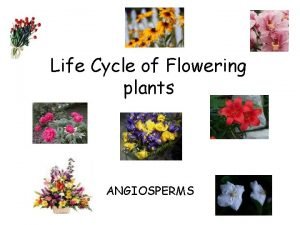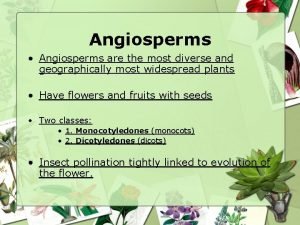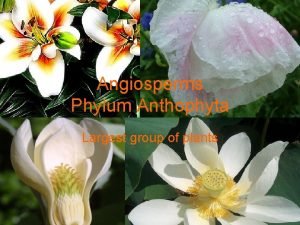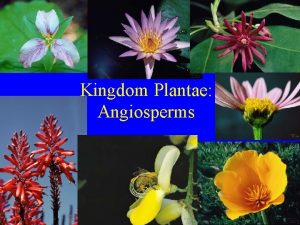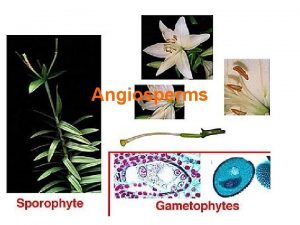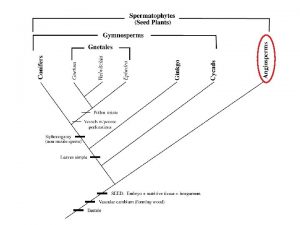Angiosperms Chapter 5 Section 3 What are Angiosperms










- Slides: 10

Angiosperms Chapter 5 Section 3

What are Angiosperms • Produces seeds enclosed in a fruit – “seed in a vessel” • Ovary- vessel where seed develops – Located within the flower • Produce flowers and fruits • Grow everywhere on Earth – Arctic to jungles

Structure of Flowers • Petals- colorful structures when flower opens- not all flowers have petals • Sepals-leaves that protect developing flower • Stamen- male reproductive parts • Pistils- female parts usually found in the center of the flower • Stigma-sticky tip • Style- slender tube connects stigma to hollow structure at center of flower where ovules are located

Reproduction • Pollination and Fertilization – Pollen falls onto stigma – Sperm and egg join in ovule – Zygote develops into embryo part of seed • Fertilization occurs when pollen falls on stigma • Pollination – Wind – Insects • Go after the nectar deep in the flower • Brush on pollen loaded anthers • Pollinates flowers as it gathers more nectar

Reproduction • Pollen falls on a stigma • Sperm and egg cells join together if flower’s ovule • Zygote develops into an embryo part of the seed

Pollination and Fertilization • Pollination occurs when a grain of pollen falls on the stigma. • Pollen can be transported by wind, birds, bats or insects • Nectar- sugar rich food located deep in flower – Animals enter flower to gather nectar – Brushes against anthers and is coated with pollen – Moves to another flower and pollen is left on sticky stigma – If pollen falls on a similar flower, pollination occurs – Zygote develops into embryo

Seed Dispersal • As seed develop, ovary turns to fruit. – Fruit- ripened ovary and other structures that enclose one or more seeds. • Apples, cherries, tomatoes, squash – Fruit is a method of dispersing seeds

Types of Angiosperms Monocots Dicots • One seed leaf • Grasses, wheat, lilies, tulips • Flowers have 3 petals or multiples of 3. • Long slender leaves with veins running parallel to one another • Bundles of vascular tissue scattered randomly throughout stem • Two seed leafs • Roses, violets, dandelions, oak and maple trees, beans, apples • Flowers have for or five petals or multiples • Leaves are wide with veins that branch off form one another • Bundles of vascular tissue arranged in a circle

Monocots and Dicots

Angiosperms and the Living World • • Important source of food, clothing and medicine Cotton for clothing Flax for linen Sap from rubber trees for rubber Furniture from maple, cherry and oak trees Willow trees for aspirin Foxglove for Digitalis ( a heart medicine) Mexican Yam for cortisone

